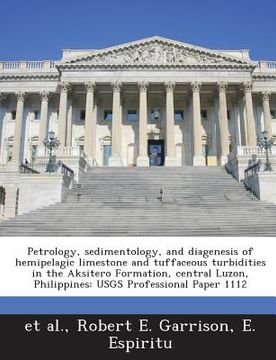Share
Petrology, Sedimentology, and Diagenesis of Hemipelagic Limestone and Tuffaceous Turbidities in the Aksitero Formation, Central Luzon, Philippines: Us (in English)
Robert E. Garrison
(Author)
·
E. Espiritu
(Author)
·
Bibliogov
· Paperback
Petrology, Sedimentology, and Diagenesis of Hemipelagic Limestone and Tuffaceous Turbidities in the Aksitero Formation, Central Luzon, Philippines: Us (in English) - Garrison, Robert E. ; Espiritu, E. ; Et Al
$ 12.42
$ 14.75
You save: $ 2.33
Choose the list to add your product or create one New List
✓ Product added successfully to the Wishlist.
Go to My WishlistsIt will be shipped from our warehouse between
Tuesday, July 16 and
Wednesday, July 17.
You will receive it anywhere in United States between 1 and 3 business days after shipment.
Synopsis "Petrology, Sedimentology, and Diagenesis of Hemipelagic Limestone and Tuffaceous Turbidities in the Aksitero Formation, Central Luzon, Philippines: Us (in English)"
The Aksitero Formation of central Luzon is an upper Eocene and lower Oligocene sequence of evenly bedded hemipelagic limestone with a few thin interlayers of tuffaceous turbidites. The limestone consists chiefly of planktonic foraminifers and calcareous nannofossils, with up to 30 percent of noncarbonate components, chiefly volcaniclastic debris. The tuff layers are graded beds. Composed mainly of glass shards, pumice fragments, crystals, and fine-grained volcanic rock fragments. Hydrocarbons migrated into the pores of the tuffaceous layers early during diagenesis but they were subsequently flushed out and only bitumen remains, chiefly as thin coatings on grains and wthin pumice vesicles. Later during diagenesis, zeolites (mordenite and c1inoptilolite) and secondary calcite preferentially replaced glass shards and pumice fragments. Deposition of the Aksitero Formation probably occurred at depths of at least 1,000 meters within a subsiding basin adjacent to an active island arc system. Submarine ash eruptions of silicic composition caused volcaniclastic turbidity currents that occasionally reached the basin floor. The more proximal facies of these volcaniclastic deposits may be prospective for hydrocarbons.

